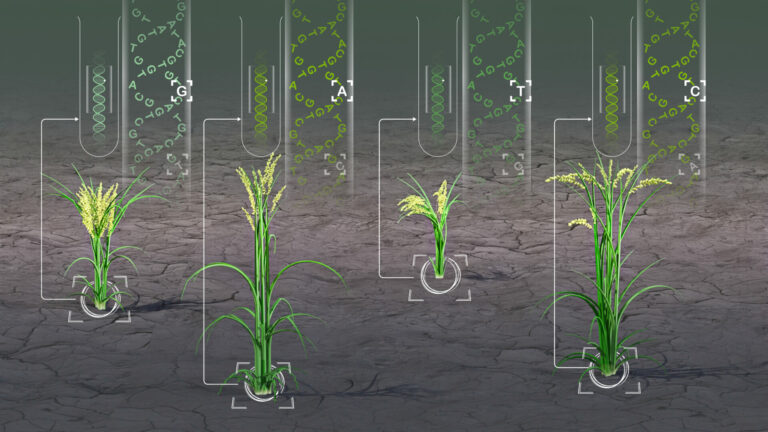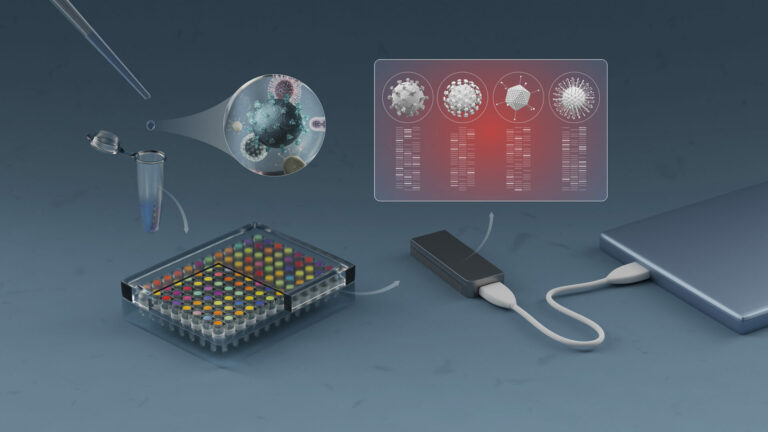Bioengineering
Keeping a vigilant watch on SARS-CoV-2
New lateral flow test Vigilant is cheaper, easier to use and as reliable as the current gold standard PCR test for diagnosing SARS-CoV-2 infection.

A SARS-CoV-2 lateral flow test that combines two bacterial enzymes with genetic sequences and a couple of probes is cheaper and easier to use than PCR tests while producing comparably reliable results. Called Vigilant and designed at KAUST, the test can detect very small amounts of viral RNA in a sample.
“Several types of lateral flow tests are currently available or under research for detecting SARS-CoV-2,” says KAUST Ph.D. student Tin Marsic. “Depending on how they work, they all have disadvantages, including detecting the virus only several days after infection or producing false positive and false negative results.” PCR tests, which are conducted in laboratories, produce more reliable results but are expensive and require sophisticated equipment and skilled personnel.
“Vigilant can be conducted in nonlaboratory settings and is significantly cheaper and easier to use than PCR tests,” says Marsic.
The first critical step of the Vigilant platform involves a technique called reverse transcription-recombinase polymerase amplification (RT-RPA) to make many copies of a specific region on the SARS-CoV-2 genome, if it exists in a person’s nose and throat swab sample. PCR tests also amplify viral gene sequences in samples but involve putting the samples through multiple high and low temperature cycles. RT-RPA can be done at room temperature with much cheaper and easy-to-use equipment.
“We are also working on producing other efficient and rapid diagnostic tests”
Any SARS-CoV-2 amplified genes in the product of this process are tagged with a molecule called biotin, then added to a test tube containing KAUST’s specially designed detection complex.
This complex is formed of two enzymes. On one end, a bacterial enzyme called Cas9 is conjugated with an RNA guide that only recognizes and attaches to the corresponding SARS-CoV-2 gene sequence. On the other end, another bacterial enzyme called VirD2 is attached to a fluorescent-tagged nucleotide sequence.
Drops from the reaction between the complex and RT-RPA product are then added to a lateral flow test strip impregnated with a biotin-recognizing protein called streptavidin on one end and a fluorescent probe-recognizing antibody on the other. If the sample contains SARS-CoV-2 gene sequences, they will have bound to the VirD2-Cas9 complex. A positive result occurs when two visible lines appear. The first line is where biotin on the SARS-CoV-2 amplicon binds to streptavidin. The second line is where the fluorescent tag on the other end of the complex attaches to the strip’s antibody. A negative result shows only as a single line caused by the fluorescent tag binding to the antibody.
“We’re now working on making our Vigilant platform more user-friendly by coupling it with an even simpler amplification technique,” says KAUST bioengineer Magdy Mahfouz, who led the research. “We are also working on producing other efficient and rapid diagnostic tests that can detect nucleic acids to enable point-of-care testing for pathogens, including viruses and disease markers.”
References
- Marsic, T., Ali, Z., Tehseen, M., Mahas, A., Hamdan, S. & Mahfouz, M. Vigilant: An engineered VirD2-Cas9 complex for lateral flow assay-based detection of SARS-CoV-2. NanoLetters 8, 3596–3603 (2021).| article
You might also like

Bioengineering
Analytic tool reveals more cream of the crops

Bioengineering
Often overlooked stem cells hold hidden powers for blood disease treatments

Bioengineering
Giving voice to the voiceless through assistive technology

Bioengineering
AI tool predicts function of unknown proteins

Bioengineering
Shuffling the deck for privacy

Bioengineering
Greening initiatives that hit home

Bioengineering
AI for cells helps illuminate their identity

Bioengineering




